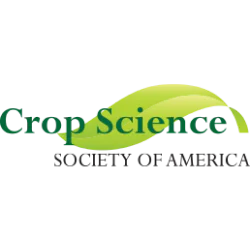|
|
|
|
Springer Nature
987 citations, 21.5%
|
|
|
Elsevier
772 citations, 16.82%
|
|
|
MDPI
754 citations, 16.42%
|
|
|
Wiley
365 citations, 7.95%
|
|
|
Taylor & Francis
275 citations, 5.99%
|
|
|
Frontiers Media S.A.
128 citations, 2.79%
|
|
|
Walter de Gruyter
65 citations, 1.42%
|
|
|
Oxford University Press
58 citations, 1.26%
|
|
|
Polish Botanical Society
48 citations, 1.05%
|
|
|
Czech Academy of Agricultural Sciences
44 citations, 0.96%
|
|
|
Scientific Societies
36 citations, 0.78%
|
|
|
IOP Publishing
35 citations, 0.76%
|
|
|
Pleiades Publishing
26 citations, 0.57%
|
|
|
SciELO
25 citations, 0.54%
|
|
|
Public Library of Science (PLoS)
24 citations, 0.52%
|
|
|
International Society for Horticultural Science (ISHS)
24 citations, 0.52%
|
|
|
Cambridge University Press
20 citations, 0.44%
|
|
|
EDP Sciences
18 citations, 0.39%
|
|
|
CSIRO Publishing
17 citations, 0.37%
|
|
|
|
|
|
Adam Mickiewicz University Poznan
15 citations, 0.33%
|
|
|
|
|
|
|
|
|
Cold Spring Harbor Laboratory
14 citations, 0.3%
|
|
|
Hindawi Limited
13 citations, 0.28%
|
|
|
American Chemical Society (ACS)
12 citations, 0.26%
|
|
|
Royal Society of Chemistry (RSC)
12 citations, 0.26%
|
|
|
Pensoft Publishers
12 citations, 0.26%
|
|
|
|
|
|
American Society for Horticultural Science
11 citations, 0.24%
|
|
|
Polish Academy of Sciences Chancellery
11 citations, 0.24%
|
|
|
Bentham Science Publishers Ltd.
10 citations, 0.22%
|
|
|
Canadian Science Publishing
10 citations, 0.22%
|
|
|
Russian Geographical Society
9 citations, 0.2%
|
|
|
IOS Press
8 citations, 0.17%
|
|
|
Finnish Zoological and Botanical Publishing Board
8 citations, 0.17%
|
|
|
Research Institut of Pomology and Floriculture
8 citations, 0.17%
|
|
|
Science Alert
8 citations, 0.17%
|
|
|
Akademiai Kiado
8 citations, 0.17%
|
|
|
AIP Publishing
7 citations, 0.15%
|
|
|
The Royal Society
7 citations, 0.15%
|
|
|
Asian Network for Scientific Information
7 citations, 0.15%
|
|
|
|
|
|
Magnolia Press
7 citations, 0.15%
|
|
|
Crop Science Society of America
7 citations, 0.15%
|
|
|
National Research Council Canada
7 citations, 0.15%
|
|
|
Institute of Electrical and Electronics Engineers (IEEE)
7 citations, 0.15%
|
|
|
FSBSI All-Russian Scientfic Research Institute of Vegetable Breeding and Seed Production
7 citations, 0.15%
|
|
|
IntechOpen
7 citations, 0.15%
|
|
|
King Saud University
6 citations, 0.13%
|
|
|
Wageningen Academic Publishers
5 citations, 0.11%
|
|
|
Copernicus
5 citations, 0.11%
|
|
|
Vytautas Magnus University
5 citations, 0.11%
|
|
|
Centre for Evaluation in Education and Science (CEON/CEES)
5 citations, 0.11%
|
|
|
Uniwersytet Lodzki (University of Lodz)
5 citations, 0.11%
|
|
|
Apex Publishing
5 citations, 0.11%
|
|
|
University of Zagreb, Faculty of Science, Department of Biology
5 citations, 0.11%
|
|
|
University of Chicago Press
4 citations, 0.09%
|
|
|
Crop Science Society of Japan
4 citations, 0.09%
|
|
|
Fundacion Romulo Raggio
4 citations, 0.09%
|
|
|
International Association for Plant Taxonomy
4 citations, 0.09%
|
|
|
Oriental Scientific Publishing Company
4 citations, 0.09%
|
|
|
National Academy of Sciences of Ukraine (Co. LTD Ukrinformnauka) (Publications)
4 citations, 0.09%
|
|
|
The Russian Academy of Sciences
4 citations, 0.09%
|
|
|
FSBSI FRC N.I. Vavilov All-Russian Institute of Plant Genetic Resources
4 citations, 0.09%
|
|
|
Research Square Platform LLC
4 citations, 0.09%
|
|
|
Uniwersytet Przyrodniczy w Lublinie
4 citations, 0.09%
|
|
|
Oles Honchar Dnipropetrovsk National University
3 citations, 0.07%
|
|
|
American Institute of Mathematical Sciences (AIMS)
3 citations, 0.07%
|
|
|
Faculty of Agriculture, Ain-Shams University
3 citations, 0.07%
|
|
|
Korean Society of Breeding Science
3 citations, 0.07%
|
|
|
University of Ljubljana
3 citations, 0.07%
|
|
|
Institute of Chemical Fibres
3 citations, 0.07%
|
|
|
China National Rice Research Institute
3 citations, 0.07%
|
|
|
Japanese Society for Horticultural Science
3 citations, 0.07%
|
|
|
Entomological Society of America
3 citations, 0.07%
|
|
|
Korean Society of Plant Pathology
3 citations, 0.07%
|
|
|
Korean Society of Mycology
3 citations, 0.07%
|
|
|
|
|
|
Gabonatermesztesi Kutato Kozhasznu Tarsasag/Cereal Research Non-Profit Company
3 citations, 0.07%
|
|
|
Sociedade Brasileira de Herbicidas e Ervas Daninhas
3 citations, 0.07%
|
|
|
Escola Superior de Agricultura Luiz de Queiroz
3 citations, 0.07%
|
|
|
Annual Reviews
3 citations, 0.07%
|
|
|
Allerton Press
3 citations, 0.07%
|
|
|
S. Karger AG
3 citations, 0.07%
|
|
|
National Library of Serbia
3 citations, 0.07%
|
|
|
Scientific Research Publishing
3 citations, 0.07%
|
|
|
Italian Society of Sivilculture and Forest Ecology (SISEF)
3 citations, 0.07%
|
|
|
IMR Press
2 citations, 0.04%
|
|
|
Proceedings of the National Academy of Sciences (PNAS)
2 citations, 0.04%
|
|
|
University of Kragujevac
2 citations, 0.04%
|
|
|
Index Copernicus
2 citations, 0.04%
|
|
|
Eco-Vector LLC
2 citations, 0.04%
|
|
|
American College of Allergy, Asthma, & Immunology
2 citations, 0.04%
|
|
|
|
|
|
Wydawnictwo Akademii Rolniczej
2 citations, 0.04%
|
|
|
Instituto Nacional de Investigacion y Tecnologia Agraria y Alimentaria
2 citations, 0.04%
|
|
|
|
|
|
Institute of Molecular Biology and Genetics (NAS Ukraine)
2 citations, 0.04%
|
|
|
Forensic Science Society
2 citations, 0.04%
|
|
|
|
|
































































